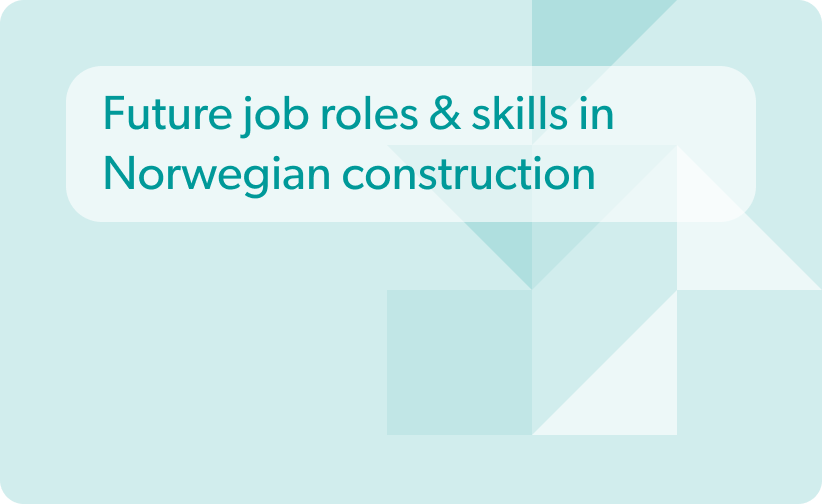From the first hello to seamless employee offboarding, make every stage matter
WebFX tells us that 88 percent of folks trust consumer reviews just as much as recommendations from friends and family.
Wrap your head around that — for every 10 people, 8 are shaping their thoughts on your product or service based on what they read in reviews.
Now, HR leaders, you might wonder what this has to do with you. Like reviews, sway purchasing decisions, disgruntled employee feedback on job portals or social media can seriously impact your future recruiting efforts. Think about the fallout when you give someone the boot without proper offboarding:
- 86% of employees and job seekers scope out company reviews and ratings to determine where to apply for a job.
- 20% of organizations say they’ve faced data breaches caused by former employees.
- You lose two decades of know-how when a leadership position gets axed due to an unbearable workload.
Conversely, 92% of people would mull over switching jobs if offered a spot at a company with a stellar corporate rep. But before you roll out the farewell carpet for your departing crew, hoping for some warm goodbyes and hugs, remember that employee offboarding isn’t just about the farewells. It kicks off from the very first hello. Let’s get straight to the specifics.
The first touchpoint with employees, also known as setting the stage right
“I’ve learned that people will forget what you said, people will forget what you did, but people will never forget how you made them feel.” – Mary Angelou
The journey from recruitment to offboarding is a continuum; each stage influences the next. A positive employee experience from the beginning benefits the employee during their tenure and contributes to a smoother and more amicable departure when the time comes. HR leaders can significantly impact the overall employee lifecycle by prioritizing elements like accurate job descriptions, fair hiring practices, effective onboarding, and a supportive company culture.
Accurate job descriptions are crucial
Accurate job descriptions are crucial, especially considering the rapidly evolving landscape of job profiles influenced by trends like digitalization and automation. For example, to understand the impact of these changes, Deutsche Bahn partnered with HRForecast to analyze and optimize their current job postings for the future. The project involved crawling millions of job postings weekly, extracting skills using Natural Language Processing algorithms, and assessing the future orientation of job descriptions.
The insights provided Deutsche Bahn with an automated market screening for identifying new trends, competitor strategy insights, and valuable input for creating more attractive and future-oriented job postings. This strategic analysis ensures that Deutsche Bahn is well-prepared for the challenges of the evolving labor market, enhancing their recruiting, development, and succession planning processes.
Access job description templates tailored for emerging fields
Achieve precision in aligning skills and duties with organizational goals, captivate and retain top talent through strategic groundwork, and uncover key data points for impactful job postings.
Onboarding sets the tone
Once the right candidate is identified and brought on board, the onboarding and orientation process becomes the bridge between anticipation and reality. A well-structured onboarding program accelerates the integration of new hires into the company culture and sets the tone for a positive employee experience. Investing in a comprehensive onboarding process pays dividends during offboarding, as employees who feel valued from the start are more likely to part ways amicably.
The role of company culture
Company culture is more than just a buzzword — it’s the soul of your organization. A positive and inclusive culture contributes to employee satisfaction and productivity and leaves a lasting impression. As employees move on, they carry their skills and perceptions of your company. A supportive culture contributes to positive reviews and a more resilient corporate reputation, even during times of employee departure.
Employee experience during tenure
Building a positive employee experience throughout their tenure is pivotal for fostering loyalty, setting the stage for a smooth offboarding process, and delivering various organizational benefits. Here are six proven reasons why the employee experience matters:
- Happy employees are up to 20% more productive at work.
- Disengaged employees cost organizations between $450 billion and $550 billion annually.
- 64% of employees do not feel they have a strong workplace culture.
- Organizations with highly engaged employees outperform peers by 147% in earnings per share.
- Happy employees perform tasks with 19% greater accuracy and generate 37% more revenue.
These elements highlight the necessity of establishing a favorable work atmosphere, underscoring the importance of the employee journey for individual welfare and the organization’s overall success. Various critical aspects contribute to a satisfying work experience.
Upskilling, reskilling, and cross-skilling
Investing in employees’ professional development through upskilling, reskilling, and cross-skilling enhances their skills and demonstrates a commitment to their growth. This proactive approach can lead to a workforce that feels valued and equipped to navigate evolving industry demands. When it comes to offboarding, employees are more likely to express gratitude for the learning opportunities provided and may leave with a positive perspective on their time with the company.
To make informed decisions, allocate budgets effectively, and prioritize spending, organizations need to be able to quantify the potential value of various HR initiatives. With the help of the HRForecast ROI calculator, you can shed light on the financial implications of workforce investments. The ROI calculations allow you to quantify the return on your upskilling investments. By understanding the expected returns, you can optimize your learning and development (L&D) spending, ensure efficient skill development, and drive business growth.
This strategic approach ensures that your organization is not only investing in the present but also laying the groundwork for a resilient and adaptable workforce that can meet the challenges of the future job market.
Read how you can use the HRForecast ROI calculator to get accurate data to estimate the financial returns of workforce investments.
Career paths and development opportunities
Clear career paths and opportunities for advancement are potent motivators for employees. When individuals see a future within the organization and perceive that their contributions are acknowledged through promotions or lateral moves, they are more likely to stay engaged and committed. This sense of career progression contributes to a positive overall experience and can influence how departing employees reflect on their time with the company.
HR checklist for effective career planning
Enhance retention and engagement through motivational career paths and stay ahead in workforce trends by downloading the checklist for free.
Effective performance reviews
Regular and constructive performance reviews provide employees with feedback on their contributions and areas for improvement. A transparent performance evaluation process builds trust and helps employees understand their impact on the organization. Employees who have received fair and consistent performance feedback are more likely to leave with a sense of closure and understanding when it comes to offboarding.
Competitive salary and benefits packages
A competitive salary and comprehensive benefits package are fundamental components of employee satisfaction. When employees feel adequately compensated and supported through benefits such as healthcare, retirement plans, and other perks, they are more likely to stay committed to the organization. This satisfaction can positively influence their perspective during offboarding.
Mentoring and supportive relationships
Mentoring programs and supportive relationships within the workplace contribute significantly to employee well-being. Having mentors and colleagues who provide guidance and encouragement fosters a positive work environment. Departing employees, having experienced a supportive network, are more likely to appreciate their time with the company, even if they are moving on.
To further amplify these positive connections, HRForecast is excited to introduce Connect & Grow in our upcoming 2024 release. This innovative feature will include the Mentoring module, specifically designed to facilitate connections between employees seeking mentors and those willing to share their expertise. It will support professional development and informal connections, such as lunch meetups.
To stay updated on the latest developments and be the first to know when Connect & Grow is launched, subscribe to our newsletter!
Transition into a smoother offboarding process
As organizations transition to the critical phase of employee offboarding, it is imperative to approach this stage with unwavering care and diligence, mirroring the commitment demonstrated throughout the employee’s entire tenure.
The urgency of such meticulous offboarding practices is underscored by the sobering statistics of 224,503 layoffs recorded in 2023, reflecting the volatile landscape of workforce dynamics. These numbers emphasize the significance of having robust offboarding processes to mitigate the impact of organizational changes and maintain a compassionate, supportive environment for departing employees.
Prioritize ample time for a comprehensive handover
Providing employees with ample notice before departure is a crucial aspect of a respectful offboarding process. This time allows for a smooth transition, enabling the team members in transition to wrap up projects, document processes, and facilitate a seamless handover. A well-thought-out transition minimizes disruption to the team and ensures that the departing employee leaves on good terms.
A thorough handover process is essential for transferring knowledge and responsibilities smoothly. Clear documentation, collaboration with team members, and effective communication ensures that the departing employee’s expertise is retained within the organization. This step benefits the team left behind and sets the stage for a positive perception from the departing employee, knowing that their contributions are valued. Moreover, Botkin and Seeley estimated that eighty percent of knowledge is tacit. Yet, one of the most difficult tasks of knowledge management remains to facilitate the transfer of tacit knowledge into explicit knowledge. This underscores why providing ample time for the handover process is crucial, as it helps employees transfer tacit knowledge effectively.
Assistance in finding other opportunities
Assistance in finding other opportunities is a crucial element of a comprehensive offboarding process. Supporting departing employees during their transition to new opportunities showcases a commitment to their well-being beyond their time with the company and contributes to a positive exit experience.
Offering outplacement services, exemplified by Spotify’s recent initiative where all employees were eligible for such services for two months during a layoff affecting 17% of its workforce, underscores the commitment to aiding individuals in their career transition. Providing resources, networking assistance, and career counseling are essential components that not only alleviate the stress of job hunting but also enhance the company’s reputation as an employer genuinely invested in the success of its former staff.
Conducting an exit interview
About 75% of businesses utilize exit interviews to gain insights into the employee experience and understand the reasons behind departures. These interviews are valuable tools conducted thoughtfully, allowing departing employees to share both positive and constructive feedback. The data gathered from exit interviews contributes to a continuous cycle of enhancement and growth in company practices. An excellent exit interview helps employees feel heard and offers valuable information on why individuals may choose to leave for other opportunities.
Understanding the benefits competitors offer their employees is a key advantage derived from exit interviews. Companies can refine their work environments by learning from departing employees about what inspires them to join other teams. According to Pew, most people leave their jobs due to low salaries (37%), lack of opportunities (33%), and feeling disrespected (35%). A robust exit interview process can help employers identify and address these issues, fostering a workplace that retains top talent and addresses weak links in the organizational structure.
Build a team that won’t depart, Hire smart from the very start
The most effective way to navigate the challenges of employee offboarding is to minimize the need for it in the first place. Hiring the right candidates from the beginning is a strategic move that saves resources, maintains team cohesion, and sustains a positive work environment.
HR leaders can strategically enhance the talent management lifecycle by leveraging the smartHire solution to improve hiring accuracy and reduce the likelihood of future offboarding needs. Furthermore, by employing market intelligence data, HR leaders can proactively anticipate and adapt to industry trends and evolving skill demands, steering clear of over hiring or selecting skills that might become obsolete.
This forward-thinking approach aligns recruitment efforts with future needs, ensuring the organization builds an adaptable and resilient workforce. Emphasizing the importance of hiring for both technical competencies and cultural fit. As HR leaders you can foster a cohesive team that shares values and works harmoniously, ultimately minimizing the risk of disruptions leading to offboarding.
Stay up to date with our newsletter
Every month, we’ll send you a curated newsletter with our updates and the latest industry news.



























 info@hrforecast.de
info@hrforecast.de
 +49 89 215384810
+49 89 215384810






